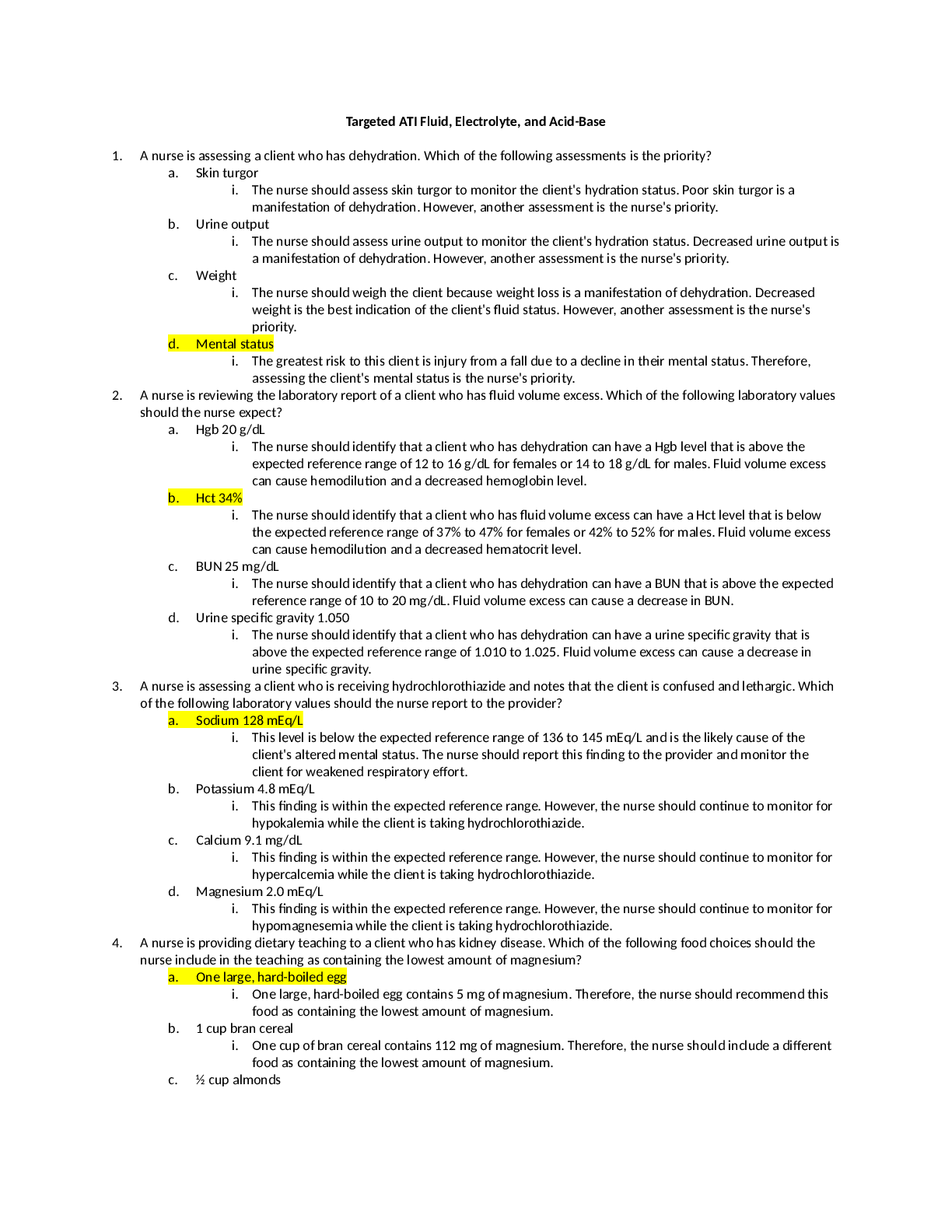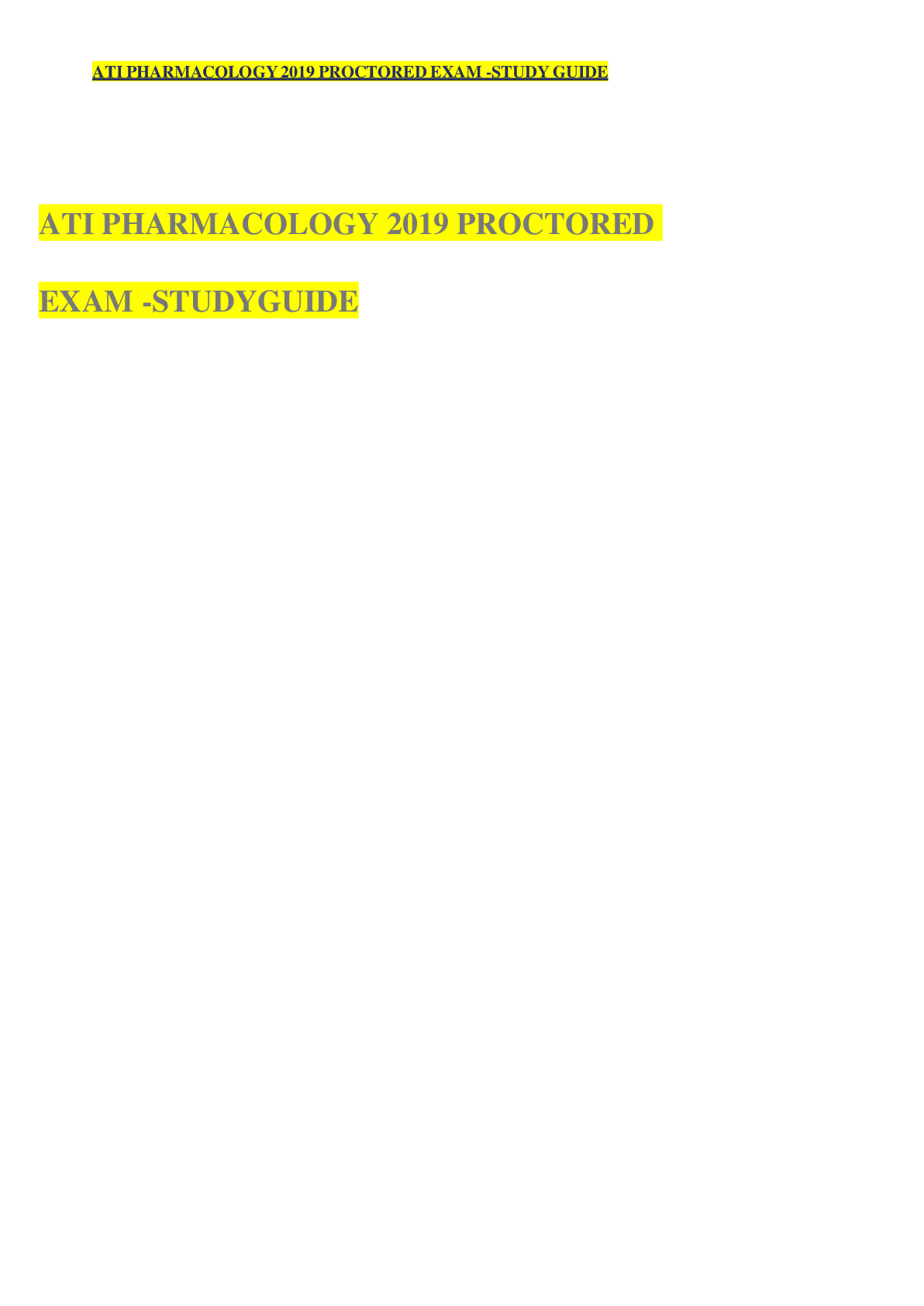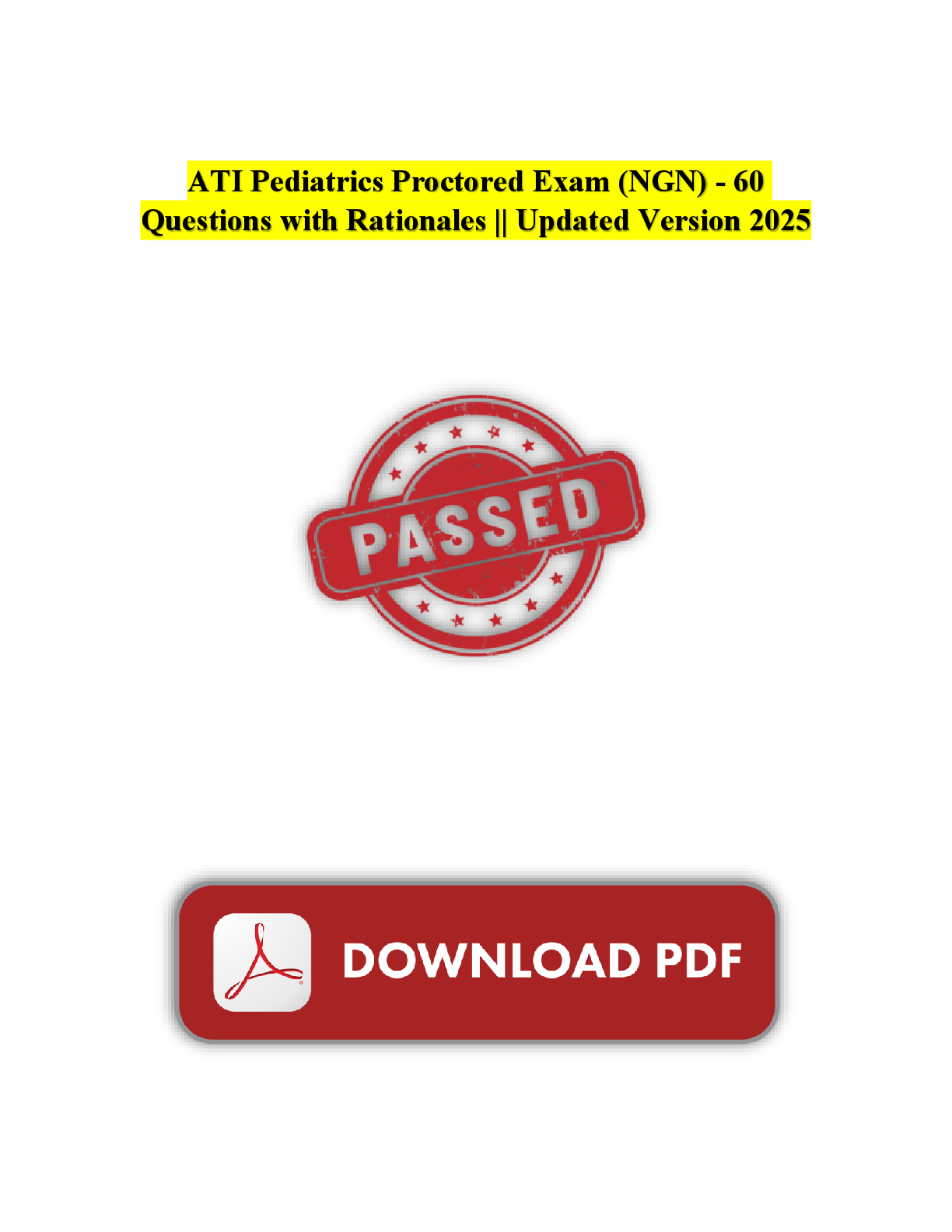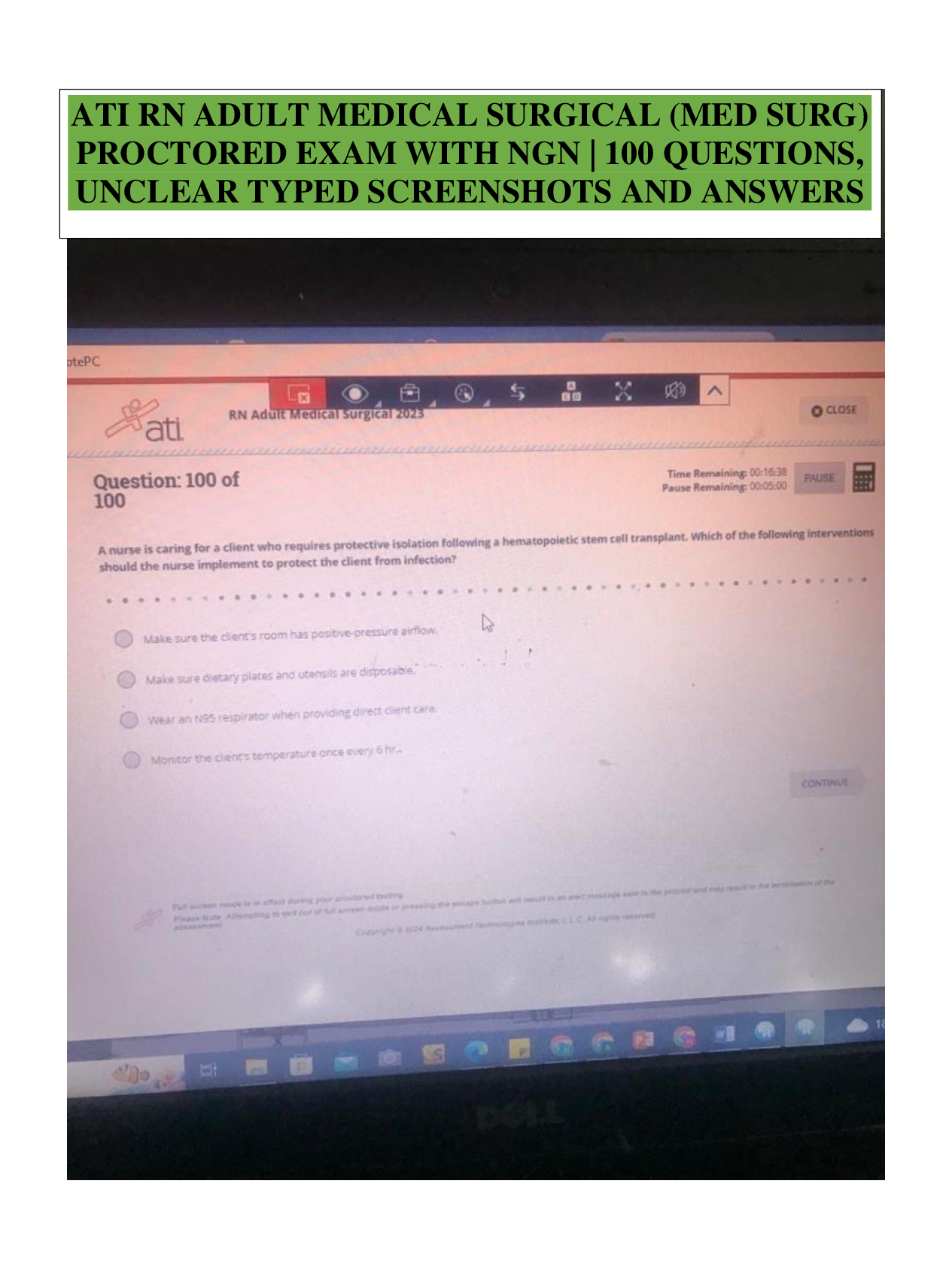Health Care > ATI > 1400 Fluid Electrolytes and Acid Base Imbalances Practice Questions with Rationales (All)
1400 Fluid Electrolytes and Acid Base Imbalances Practice Questions with Rationales
Document Content and Description Below
Targeted ATI Fluid, Electrolyte, and Acid-Base 1. A nurse is assessing a client who has dehydration. Which of the following assessments is the priority? a. Skin turgor i. The nurse should assess sk... in turgor to monitor the client's hydration status. Poor skin turgor is a manifestation of dehydration. However, another assessment is the nurse's priority. b. Urine output i. The nurse should assess urine output to monitor the client's hydration status. Decreased urine output is a manifestation of dehydration. However, another assessment is the nurse's priority. c. Weight i. The nurse should weigh the client because weight loss is a manifestation of dehydration. Decreased weight is the best indication of the client's fluid status. However, another assessment is the nurse's priority. d. Mental status i. The greatest risk to this client is injury from a fall due to a decline in their mental status. Therefore, assessing the client's mental status is the nurse's priority. 2. A nurse is reviewing the laboratory report of a client who has fluid volume excess. Which of the following laboratory values should the nurse expect? a. Hgb 20 g/dL i. The nurse should identify that a client who has dehydration can have a Hgb level that is above the expected reference range of 12 to 16 g/dL for females or 14 to 18 g/dL for males. Fluid volume excess can cause hemodilution and a decreased hemoglobin level. b. Hct 34% i. The nurse should identify that a client who has fluid volume excess can have a Hct level that is below the expected reference range of 37% to 47% for females or 42% to 52% for males. Fluid volume excess can cause hemodilution and a decreased hematocrit level. c. BUN 25 mg/dL i. The nurse should identify that a client who has dehydration can have a BUN that is above the expected reference range of 10 to 20 mg/dL. Fluid volume excess can cause a decrease in BUN. d. Urine specific gravity 1.050 i. The nurse should identify that a client who has dehydration can have a urine specific gravity that is above the expected reference range of 1.010 to 1.025. Fluid volume excess can cause a decrease in urine specific gravity. 3. A nurse is assessing a client who is receiving hydrochlorothiazide and notes that the client is confused and lethargic. Which of the following laboratory values should the nurse report to the provider? a. Sodium 128 mEq/L i. This level is below the expected reference range of 136 to 145 mEq/L and is the likely cause of the client's altered mental status. The nurse should report this finding to the provider and monitor the client for weakened respiratory effort. b. Potassium 4.8 mEq/L i. This finding is within the expected reference range. However, the nurse should continue to monitor for hypokalemia while the client is taking hydrochlorothiaz [Show More]
Last updated: 2 years ago
Preview 1 out of 33 pages

Buy this document to get the full access instantly
Instant Download Access after purchase
Buy NowInstant download
We Accept:

Reviews( 0 )
$15.00
Can't find what you want? Try our AI powered Search
Document information
Connected school, study & course
About the document
Uploaded On
Apr 24, 2022
Number of pages
33
Written in
Additional information
This document has been written for:
Uploaded
Apr 24, 2022
Downloads
0
Views
80













